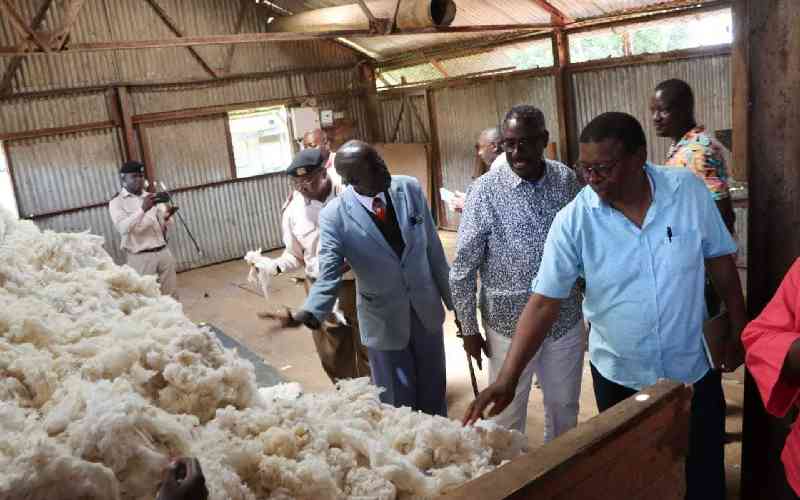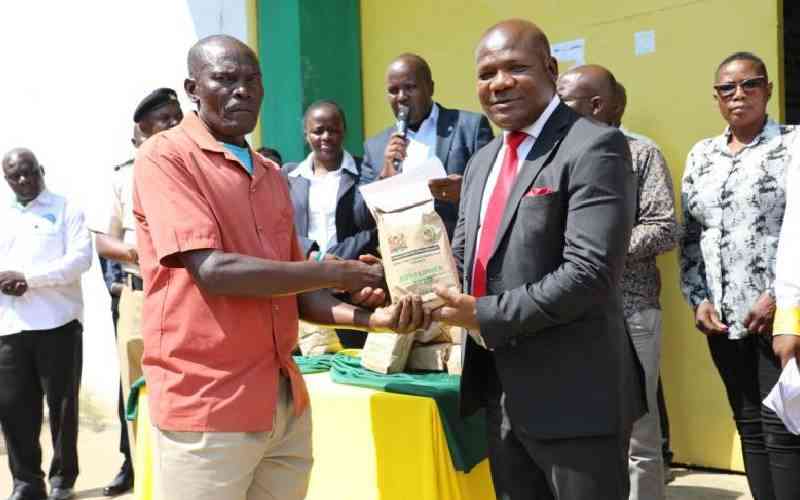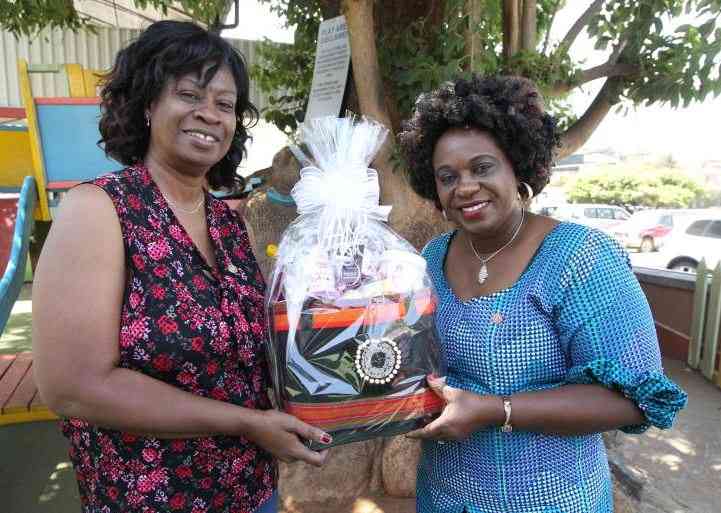By Lillian Kiarie
Kenya: “The greenhouse buzz got to me in 2009. I erected a greenhouse on a quarter acre of my backyard and started planting tomatoes. It is the most profitable venture I have ever engaged in,” said Monicah Rosana.
Rosana, a greenhouse farmer in Ngong, harvested 11,000 kilos of tomatoes the first time, which she sold for Sh110,000.
“I had purchased my 8 metre by 15 metres greenhouse at Sh150,000,” she told Business Beat.
She increased the tomato seedlings under her greenhouse, and added capsicum and broccoli.
“The tomatoes matured after 75 days and I harvested 2,200 kilos, which I sold for Sh100 a kg, earning about Sh220,000,” she said.
In a country where about 80 per cent of the country is arid and semi-arid, greenhouse technology is the way to go in harnessing the potential in agriculture.
Unlike outdoor farming, greenhouses keep pests and harsh weather at bay, making the land conducive and allowing farmers to get high yields.
Horticultural produce like tomatoes, lettuce, broccoli, onions, flowers and capsicum do very well under greenhouses.
And as the technology advances, you can now get started with a Sh40,000 miniature greenhouse kit, an initiative of the Kenya Agricultural Research Institute.
Retail prices for bigger kits begin at Sh100,000. Raphael Ngari, a farmer trained at KARI’s Thika branch, assembles such structures.
“A greenhouse that is 8m by 15m goes for Sh100,000, and includes the cost of materials for construction, a drip kit for irrigation together with the tank, seeds, fertiliser and soil preparation that entails solarisation to kill pests and disease-causing organisms,” he said.
Plant trees
“The timber and poles are first coated with wood preservative to safeguard them from termites. The poles are secured to the ground with cement to guarantee the structure a lifespan of at least five years.”
The Embu farmer uses ultraviolet-treated polythene paper to complete his structures. The purpose of greenhouse cover is to protect the crops from the harsh and unpredictable external environment, while transmitting as much light as possible.
Stay informed. Subscribe to our newsletter
Ngari designs greenhouses specific to the temperature and weather patterns of an area, such as a high roof for hot areas and lower roofs in cold regions.
He first utilised his greenhouses to plant trees.
“I planted 1,000 tree seedlings in August last year in my 8m by 30m greenhouse and harvested over eight tonnes of young trees. I sold these for Sh380,000 in June this year.”
The most common sizes of greenhouses in Kenya are 8m by 15m, 8m by 30m and 8m by 60m.
Plants grown in a greenhouse mature faster than those grown outdoors.
Faster maturity
For instance, greenhouse tomatoes can mature in two months, while the minimum time taken for those farmed outdoors is three months.
Greenhouse tomatoes also enjoy a 21-day shelf life compared to 14 for those grown in the open.
Ngari’s tips for farmers interested in purchasing greenhouses are: “Make sure the structure is constructed parallel to wind direction to ensure the plants inside are not ruined. Also, the outside must have translucent polythene and the inside be padded with a net to keep pests and birds that can destroy the crop away. You can also lower construction costs by up to 40 per cent if you grow your own trees for timber.”
During last year’s Nairobi International Trade Fair, several exhibitors of greenhouse technology said it was becoming more attractive to Kenyan farmers.
Moses Khaemba of Hortipro Limited said its advantages include crop protection from weather extremities like frost and wind, limited exposure to damaging pests, higher and more consistent production per acre — which translates into more profits, natural sunlight and ventilation, and more economical water usage.
[email protected]
 The Standard Group Plc is a
multi-media organization with investments in media platforms spanning newspaper
print operations, television, radio broadcasting, digital and online services. The
Standard Group is recognized as a leading multi-media house in Kenya with a key
influence in matters of national and international interest.
The Standard Group Plc is a
multi-media organization with investments in media platforms spanning newspaper
print operations, television, radio broadcasting, digital and online services. The
Standard Group is recognized as a leading multi-media house in Kenya with a key
influence in matters of national and international interest.
 The Standard Group Plc is a
multi-media organization with investments in media platforms spanning newspaper
print operations, television, radio broadcasting, digital and online services. The
Standard Group is recognized as a leading multi-media house in Kenya with a key
influence in matters of national and international interest.
The Standard Group Plc is a
multi-media organization with investments in media platforms spanning newspaper
print operations, television, radio broadcasting, digital and online services. The
Standard Group is recognized as a leading multi-media house in Kenya with a key
influence in matters of national and international interest.








